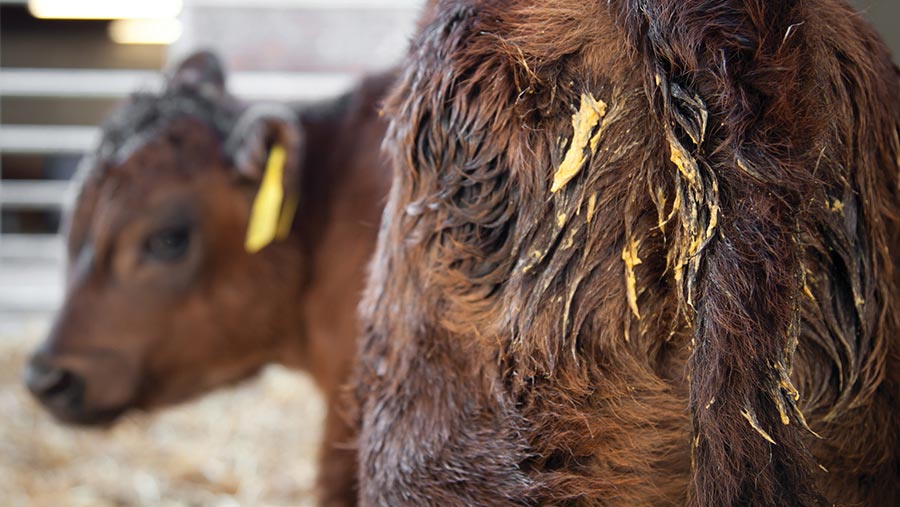Advice on supportive care of scouring calves
 © Anthea Kitching
© Anthea Kitching Calf scour poses a significant problem in youngstock rearing, contributing to an estimated 50% of calf mortality in the UK dairy industry.
While there are many infectious causes of calf scour, the treatment approach centred around supportive care remains broadly consistent.
The timely detection and effective treatment of calf scour has a huge impact on the likelihood of recovery.
See also: What’s in Your Livestock Shed? New calf-rearing unit eases pressure
About the author

Fergus Neish of Garston Veterinary Group offers expert advice on prompt and effective treatment of scour in calves.
Signs of dehydration
On average, calves lose an extra two litres of water a day when suffering from diarrhoea and, in severe cases, this can be as much as eight litres.
With these losses, calves can quickly become dehydrated, so recognising the signs of dehydration early is essential.
These include:
- Sunken eyes
- Cold extremities
- Reduced awareness of surroundings
- Dry mucus membranes.
Treatment for mild dehydration
Calves with mild dehydration can be supported with oral fluids alone. The primary objectives of oral rehydration therapy (ORT) are as follows:
- Replenish lost water and electrolytes, with sodium, potassium and chloride being the most important of these
- Provide energy to facilitate sodium and water uptake
- Correct acidosis (low blood pH), which occurs as a result of lactate build-up.
Unfortunately, not all ORT sachets are created equal. Significant variations exist in the composition of products, although these differences may not always be apparent from the packaging.
It is advisable to consult your vet about the most suitable products, taking into account the electrolyte concentration, the glucose-electrolyte ratio, and the product’s ability to correct acidosis.
Energy and protein requirements
Milk, at normal concentration, should still be offered to scouring calves to provide the necessary energy and protein.
However, administering it via stomach tubing should be avoided because of the potential accumulation of milk in the rumen, which can lead to ruminal acidosis.
If a calf refuses to drink milk, an ORT sachet with a suitable energy replacement is needed.
This is challenging to achieve owing to the impact of compounds such as glucose on the osmolarity (measure of solute concentration) of a product.
Some ORT sachets provide very little in the way of energy, meaning the calf gets far below its energy requirements, and gut absorption is severely hampered.
How to administer ORT
ORT can be administered through a bucket, bottle or stomach tube. When a calf can drink the fluid independently, there is a slightly higher absorption rate.
It is crucial to follow the instructions when mixing the ORT sachet, as the concentrations are calculated with the right osmolarity to maximise absorption.
Most sachets are mixed with water and should be given at least three hours after milk feeding.
This approach helps prevent disruption of the milk clot in the calf’s stomach and ensures a consistent supply of fluids over the course of the day.
Isolation
Supplementary to ORT, it is important to isolate the calf in a warm, dry, clean pen.
Administration of non-steroidal anti-inflammatory drugs (NSAIDs) is also recommended in addition to any disease-specific treatment.
Treatment for severe dehydration
In cases where a calf is significantly dehydrated, particularly if it lacks a suckle reflex or the ability to stand, oral fluids alone are unlikely to be sufficient.
This is because blood is diverted from the gut to vital organs, compromising the absorption of oral fluids. In such instances, veterinary intervention is necessary, typically involving the administration of intravenous fluids.
Each month, we bring practical advice from an XLVets practice on a range of different subjects.
